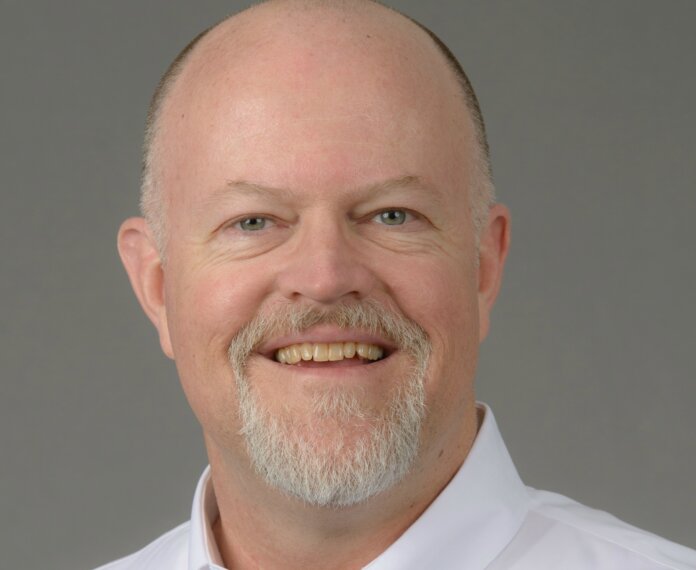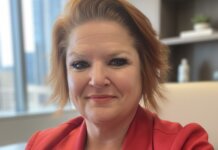PERSON OF THE WEEK: Jeff Birdsell is vice president of professional services for ReverseVision Inc., a provider of reverse mortgage technology. MortgageOrb recently interviewed Birdsell to get his views on how the reverse mortgage segment has transformed over the past several years, due mainly to regulation, and what will be driving its growth in 2016 and beyond.
Q: You have 22 years of experience in the reverse mortgage business. In addition to developing software, you hold a degree in finance – plus, you’re a certified mortgage broker. What would you say are the top factors that have reshaped the reverse segment in the past several years?
Birdsell: In September 2013, the U.S. Department of Housing and Urban Development (HUD) announced significant changes to its Home Equity Conversion Mortgage, or HECM, program, including putting limitations on how much cash, at closing, a borrower could pull out in a lump sum. There were a lot of borrowers who wanted the fixed rate HECM product – because that’s a lump sum product. So, what HUD did was come up with the HECM 60, by which a borrower can take up to 60% of the principal. So, based on your home’s value, and based on your age, you could determine how much principal monies you could get from that home. And the borrower can draw up to a maximum of 60% in cash – but not more than that – until after the first year.
Also, HUD made sure that if there are liens that consume 50% or more [of the home’s value], a borrower could still have up to 10% of his principal limit available in cash.
HUD structured it that way just so borrowers weren’t taking those big draws up front. It also recognized the risk profile of the higher-draw loans. So, if what’s available during the first year is going to be greater than 60%, then it has that higher mortgage insurance fee – it charges 2.5% of the max claim amount as the initial insurance premium – and if it is 60% or less, it is only a half a percent.
That was a big change – because after that, the share of fixed product fell from 70% of all reverse loans to maybe 20% or 30%.
Q: But didn’t that increase in the initial premium help boost revenue for the fund?
Birdsell: Yes it did – and HUD also increased the going-forward premium to 1.25%, so all of that helped protect the fund.
The next thing they addressed was the non-borrowing spouse issue – that was addressed in August 2014, I think, really as a result of a lawsuit against HUD. But what it did was make it so that that a non-borrowing spouse, who is associated with the loan but not a borrower, would not have to sell the house or pay off the mortgage once the borrower dies – provided the non-borrowing spouse is still living in the house. So basically, everything stops – they do not get access to what may have been left in the line of credit – they do not get any monthly tenure or term payments – they just don’t have to pay it back until they are out of the house. So, it protects them.
That did another thing to the pool, though: Because [the lenders] are allowing [the non-borrowers] to stay in the house for their life expectancy, they now use [the non-borrower’s] birth dates to calculate the principal limits. So, if [the non-borrowing spouse was] 50 years old [when the borrower died], HUD came up with a principal limit for a 50-year-old, and that helped determine how much money was available.
Because HUD has reduced the amount of funds available up front – through its methodology for coming up with principal limits and life expectancies and actually having ones that are specific to the younger ages – [a loan] will have a longer duration before it is paid off. However, it should not have a riskier profile. If anything, because [the non-borrowing spouse] can no longer take future draws on it, the lender is just basically riding out the accruing interest on whatever was loaned. It shouldn’t cause any additional risk – it’s just that the duration before the loans are paid off is longer.
Q: Another major change is the requirement that reverse lenders conduct financial assessment for all applicants. What impact has that had so far?
Birdsell: Well, there’s really two impacts. There’s the impact on the insurance fund – and the probability of having defaults because people can’t afford or aren’t paying their real estate taxes [and] insurance – and there’s the impact to the industry in terms of what do we have to do now in order to be able to originate a loan. The reason HUD did it is because of the challenges of a number of borrowers who were using reverse mortgages to get a lump sum of cash and then didn’t have the ability or the willingness to pay the real estate taxes or the hazard insurance. Because [reverse lenders] don’t escrow anything, the borrowers have to pay for those things themselves. So, the industry needed to address that.
The industry also needed HUD to give approval to do that because the way the guidelines were written before, they weren’t specific as to allowing a lender to look at credit and make a decision based on credit. So that was a really important change.
Q: Yes, but now that reverse lenders have to collect all of that additional data and consider it in the underwriting process, it must be resulting in additional work and expense.
Birdsell: Obviously, going from not having to do any credit analysis to having to gather all of the income and associated expenses that a forward lender would collect – that was a big add to our industry. For people in the reverse industry who had prior experience in the forward industry, they had no issues with it; it was normal. But for those of us who have been doing reverse for years and years, it was all new. Now, we’re suddenly asking borrowers all of these questions – and it’s almost like we wanted to apologize to them. But, what we didn’t realize was that, from the borrowers’ perspective, they expected us to ask those questions anyway because that’s what they’ve done for all of the other loans they ever applied for. It’s a normal, standard course of business.
But, the reverse industry had to adopt that mindset – it had to change its processes and collect those additional pieces of information, as well as have a discussion with each borrower regarding the life expectancy set aside. I think now it’s normal – I think we’ve all transitioned – and I think it is all for the better.
The other thing is the secondary market’s view of [the reverse mortgage] – for [investors] to get their arms around the quality of the asset and the loan. [With today’s reverse loan files], they’re basically looking at the credit of the individuals. But in the olden days, that information wasn’t in the file. Now that we can provide a credit profile for the borrower, it really has helped with the secondary market’s understanding of these loans. Investors can see that there’s more similarities between [reverse and forward mortgages] than they realized.
Q: What about the multi-jurisdictional aspects of reverse mortgages? Certain states have passed their own laws regarding how reverse mortgages work – for example, some now require a cooling off period to give seniors more time to consider what they are doing. How has that factored into the development of your origination software?
Birdsell: It’s not really huge for us as a software and document provider. We do our due diligence to make sure that we have state-specific disclosures and whatever else state regulators want to make borrowers aware of. From our perspective, that’s something that we manage regularly.
It’s different when looking at it from a lender or investor perspective, though. Some of the time frames the states want – in terms of, after an application, lenders having to wait so many days before they can do certain things – have an impact on lenders’ processes. Some states are coming up with their versions of laws that they think should help protect the seniors in their states. And we follow all of those.
Then, generically, you have states where it is much stricter to get licensed as a reverse lender – where you have to get all of your loan documents for every single product approved individually. In a way, it’s really not much different from the forward world. Our trade association, the National Reverse Mortgage Lenders Association (NRMLA), is pretty fabulous at staying on top of all of these state laws. The NRMLA also plays a role in helping states draft their legislation and educating state lawmakers because they often don’t really understand how these products work.
Q: So, in your view, what impact have all of these new regulations had on reverse origination volume?
Birdsell: I think what happened was, as soon as [the HUD rule requiring] financial assessment was rolled out, things got a little delayed. With the exception of the non-borrowing spouse release, there was a push of closing of loans before the new rules took effect. After that, volume dipped down, and it took a couple of months for the market to reset. But after that, we went back to what is typical for growth in the industry, which is about 4% annual growth.
But it was an obvious impact because reverse lenders had to change their processes and collect more borrower information. And from a software perspective, going from an application that did not have to store all of that credit data to [one that could] – let’s just say that the financial assessment had a ginormous impact on all of the reverse mortgage software vendors.
Q: Did you feel you had adequate time to prepare for those changes?
Birdsell: I think, as a software company, we would always say that we want more time. But HUD was very accommodating. Fortunately for us, it had to make a bunch of changes on its side, as well – its HERMIT system needed significant updating in order for it to be able to capture the additional data. As a result of it having to deal with the development of its software application, we all got more time than would be typical for HUD. But, one of the challenges was that we really couldn’t start developing stuff until it came out with the [final version of the software] – we had to wait for it to release that.
To add to that, I would say that the 2013 change was significantly more challenging because that was a 19-business day warning to the effective date.
Q: Does the segment have a seasonal pattern in terms of volume?
Birdsell: It’s not really an industry thing; it’s a borrower thing, but not a lot happens in November and December in terms of getting things started with the loan process. We’re still closing loans in November and December, but typically, you’re going to have a January-February slowdown, just because there was not as much volume of new applications getting started during the holiday season. I’m sure the forward business experiences that a little, too.
Q: What do you think is going to drive the segment’s growth in 2016 and beyond?
Birdsell: I think there are some things that are coming to light now. One is that the industry is finding the sweet spot in determining who is the “right” borrower for a reverse mortgage. It has always been a needs-based product – “I need to have more income,” or “I need to have income so I can stay in my house.” But now, people are starting to view it as another investment – as something that is a part of seniors’ whole retirement portfolios. There are academics who are looking at, what if you put a reverse mortgage on top of a sizable, fully funded investment portfolio – how does a reverse mortgage impact that? Does it have a positive impact or a negative impact? What some of these academics are looking at is using the reverse mortgage as a means to manage all of a senior’s investments. Not only does a senior have investment in stocks and bonds, but he also has this asset in his house, and by keeping it in equity, really the only thing he can count on is the appreciation. And it is not liquid.
But if that senior gets a reverse mortgage – even if he doesn’t need the cash from it – he now has a second place to go, besides your investment portfolio, to get cash for this month.
In the modeling for this, what we’re finding is that it very rarely impacts the estate value, and in many cases, it increases the estate value. Because now, when the senior is getting his monthly income to live on, he can do things such as sequence of returns.
For example, if the stock market has a declining value, the last thing the senior wants to do is pull money out of there. He wants to leave the funds in there so they can be part of the growth when the market rebounds. When the senior has a reverse mortgage, after one of those negative years, he can start pulling from the reverse mortgage – and let his investments catch up. Then, he can reach back and pull from the investments.
So, a reverse mortgage lets a borrower decide – on a monthly basis or an annual basis – what is the best place to get funds in his portfolio.
Q: Would you say that there is a challenge here in getting consumers to view the reverse mortgage as an investment tool?
Birdsell: That’s exactly it. If you think about it, you already manage your risk profile all the time by deciding how to invest in stocks and bonds – you’re always trying to capitalize and maximize that and make it last as long as possible – and you’re always looking at where to withdraw and things like the tax consequences. But, you’re completely ignoring this liquidity that’s in your house. And, you don’t have to pay taxes on it when you take that out. So, it just becomes another investment tool.
I think our challenge as an industry is to start with the financial advisors, the financial planners, and get them educated on how this can be used as an investment tool to manage the overall portfolio – not to use to go get cash for something, but to use as an option when it’s needed. Because all of the modeling we’ve done – and we’ve looked at a whole bunch of Monte Carlo situations – indicates that an estate and its liquidity are better off using a reverse mortgage today. In fact, that growth could even outpace the appreciation of a senior’s house.
So, as an industry, we need to transition and get people to understand that this is not a needs-based product only, but it is a very valuable and strong asset in the retirement planning process – and you can use it with your investment portfolio. And once we get people to see that, they’re going to have an “ah-hah” moment. But, we must get the investment advisor community on board with this so it can provide the guidance.














